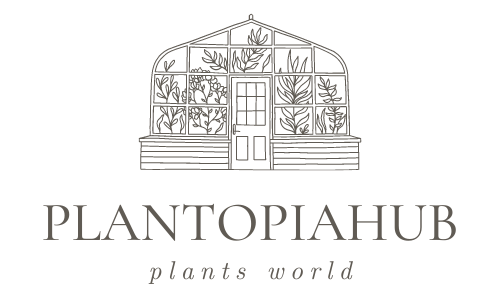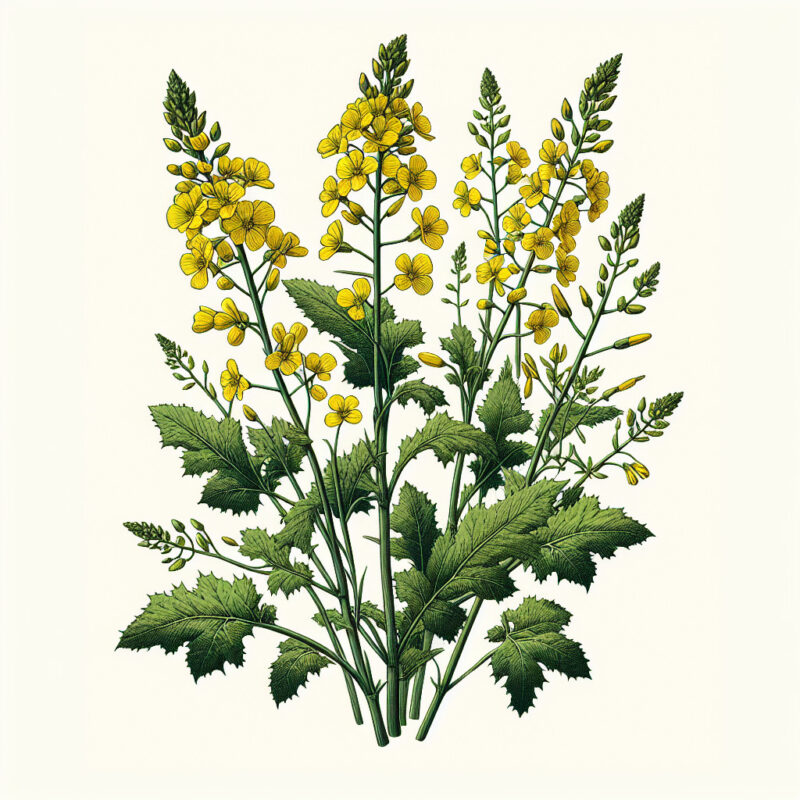Wild mustard plants, scientifically known as Sinapis arvensis, are a common sight in many parts of the world. These herbaceous plants belong to the Brassicaceae family, which also includes popular vegetables like cabbage and broccoli. With their vibrant yellow flowers and distinctive long, serrated leaves, wild mustard plants stand out among their floral counterparts in fields, meadows, and roadsides. Their impressive ability to thrive in various habitats makes them resilient invaders, sometimes even regarded as bothersome weeds. However, to those with an appreciation for nature’s beauty and ecological balance, wild mustard plants can be a captivating addition to the landscape.
key Takeaways
- Wild mustard plants are members of the Brassicaceae family and are widespread across various climates and regions.
- Wild mustard plants have distinct yellow flowers with four petals and grow in clusters.
- They have deeply lobed leaves with irregular and jagged edges.
- Wild mustard plants can grow up to 4 feet tall and have a thick, sturdy stem.
- The plants have a strong odor, similar to that of mustard seeds.
- Mustard plants produce small round seeds that can range in color from yellow to black.
- Wild mustard plants are classified as invasive weeds in some areas due to their rapid growth and ability to compete with crops and native species.
- These plants have long taproots that help them access water and nutrients from deep within the soil.
- Wild mustard plants are adaptable and can thrive in a variety of soil types, including sandy, loamy, and clay soils.
- They are often found in disturbed areas such as agricultural fields, roadsides, and gardens.
What Does Wild Mustard Plants Look Like?
Wild mustard plants, scientifically known as Brassica kaber, are herbaceous annual plants that are part of the mustard family. They are native to Europe but can now be found growing in various regions around the world. These plants are commonly found in fields, meadows, along roadsides, and in disturbed areas.
Appearance
Wild mustard plants have a distinctive appearance that makes them easily recognizable. They typically grow to a height of 1 to 3 feet, although some specimens can reach up to 6 feet under optimal conditions. The stems are upright and branched, with a rough texture and often covered in fine hairs. The leaves are alternate, deeply lobed, and can vary in shape from lanceolate to oblanceolate. They are typically dark green in color and have a rough texture similar to the stems. The leaves give off a pungent odor when crushed.
Flowers
The flowers of wild mustard plants are small and yellow, arranged in elongated clusters known as racemes. These racemes can grow up to 3 inches long and are held at the tips of the stems. Each flower has four petals in the shape of a cross, a characteristic feature of plants in the mustard family. The flowers are highly attractive to pollinators, such as bees and butterflies, and are an important source of nectar for these insects.
Fruit and Seeds
As the flowers fade, they give way to the development of fruits known as siliques. These siliques are long, slender, and upright pods that contain numerous small seeds. The siliques can grow up to 4 inches long and gradually turn from green to brown as they mature. When fully ripe, they split open along two sides, releasing the seeds. Each seed is tiny and light brown with a thin, oblong shape. Wild mustard plants can produce a large number of seeds, contributing to their ability to spread rapidly and colonize new areas.
Habitat and Distribution
Wild mustard plants are highly adaptable and can thrive in a wide range of habitats. They are commonly found in disturbed areas, including agricultural fields, pastures, and gardens. These plants are particularly successful in colonizing areas that have been recently disturbed by human activity. Wild mustard plants have a weedy nature and can quickly outcompete native plants, making them a problematic invasive species in some regions.
Uses
Although wild mustard plants are considered invasive in certain areas, they do have some practical uses. The leaves of young wild mustard plants can be harvested and used as a flavorful addition to salads, soups, and other dishes. The seeds can also be ground to produce a spicy mustard condiment. Additionally, some herbalists have used parts of the plant for medicinal purposes, including treating respiratory conditions and digestive issues.
FAQs about What Does Wild Mustard Plants Look Like
What are the physical characteristics of wild mustard plants?
Wild mustard plants, typically found in meadows and on roadsides, are characterized by their yellow flowers. These flowers have four petals arranged in the shape of a cross, giving the plant its scientific name Sinapis arvensis. The leaves of wild mustard plants are elongated and lobed, with a rough texture. They grow alternately along the stem and are typically between 2 to 8 inches long. The plant can reach a height of about 3 to 5 feet.
How can I identify wild mustard plants?
Identifying wild mustard plants is relatively easy once you know what to look for. The most distinguishing feature is the bright yellow flowers with four petals. The leaves also aid in identification, as they are elongated, lobed, and feel rough to the touch. The stems of wild mustard plants are typically hairy, and the plant tends to grow in clusters. Additionally, wild mustard plants emit a pungent odor, especially noticeable when the leaves are crushed.
Are wild mustard plants edible?
Yes, wild mustard plants are edible and have been used in cooking and for medicinal purposes for centuries. The young leaves, flowers, and seeds of wild mustard are all commonly consumed. The leaves can be eaten raw in salads or cooked as a potherb. The flowers can be used as a garnish or added to salads for an extra peppery taste. The seeds of wild mustard plants can be ground into a powder and used as a spice, similar to mustard seeds. However, it’s important to ensure that the plants are properly identified and harvested from a clean, pesticide-free area before consuming.
Do wild mustard plants have any benefits or uses?
Aside from their culinary uses, wild mustard plants have several other benefits and uses. They are known to attract beneficial insects, such as butterflies and bees, to your garden. They can also help improve soil quality by fixing nitrogen and adding organic matter. Some people also use wild mustard plants as a natural dye for textiles, as it produces a yellow color. Additionally, certain parts of the plant have been used in traditional medicine for their diuretic, antiseptic, and analgesic properties.
Are wild mustard plants considered invasive?
Yes, wild mustard plants are considered invasive in many regions. Due to their prolific growth and rapid spread, they can outcompete native plant species and disrupt natural ecosystems. They have a high seed production rate, with each plant capable of producing hundreds of seeds. These seeds can remain viable in the soil for several years, making it difficult to control their spread once established. It’s important to carefully manage wild mustard populations to prevent them from taking over native habitats.
Examining Types and Options for Achieving Popular Subject Matter
Growing a Thriving Garden: Essential Plant Choices and Tips
In this section, we explore the different types of plants that are essential for creating a thriving garden. From vibrant flowers to nutritious vegetables, we’ll cover the top choices that will bring life and beauty to your outdoor space. Learn about the best planting techniques, soil requirements, and maintenance tips to ensure the health and success of your garden.
Lawn Care 101: Choosing the Right Grass and Maintenance Methods
In this section, we delve into the world of lawn care, focusing on the various types of grass that are popular for different regions and climates. Discover which grass varieties are best suited for your specific needs, whether it’s creating a lush green lawn for relaxation or a durable turf for high foot traffic areas. We’ll also discuss essential maintenance methods, such as mowing, watering, and fertilizing, to keep your lawn looking its best throughout the year.
Final Thoughts
The article has provided a comprehensive understanding of what wild mustard plants look like. From their physical characteristics, such as the cruciform yellow flowers and lobed leaves, to their identification and edible and medicinal uses, we have covered the essential aspects of these plants. Wild mustard plants offer various benefits, including attracting beneficial insects, improving soil quality, and even providing natural dye.
However, it’s important to be cautious with wild mustard plants, as they can become invasive and disrupt the balance of ecosystems. Managing their spread and preventing them from outcompeting native plant species is crucial for preserving the biodiversity of natural habitats.

